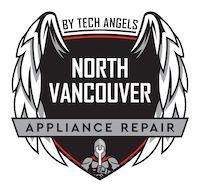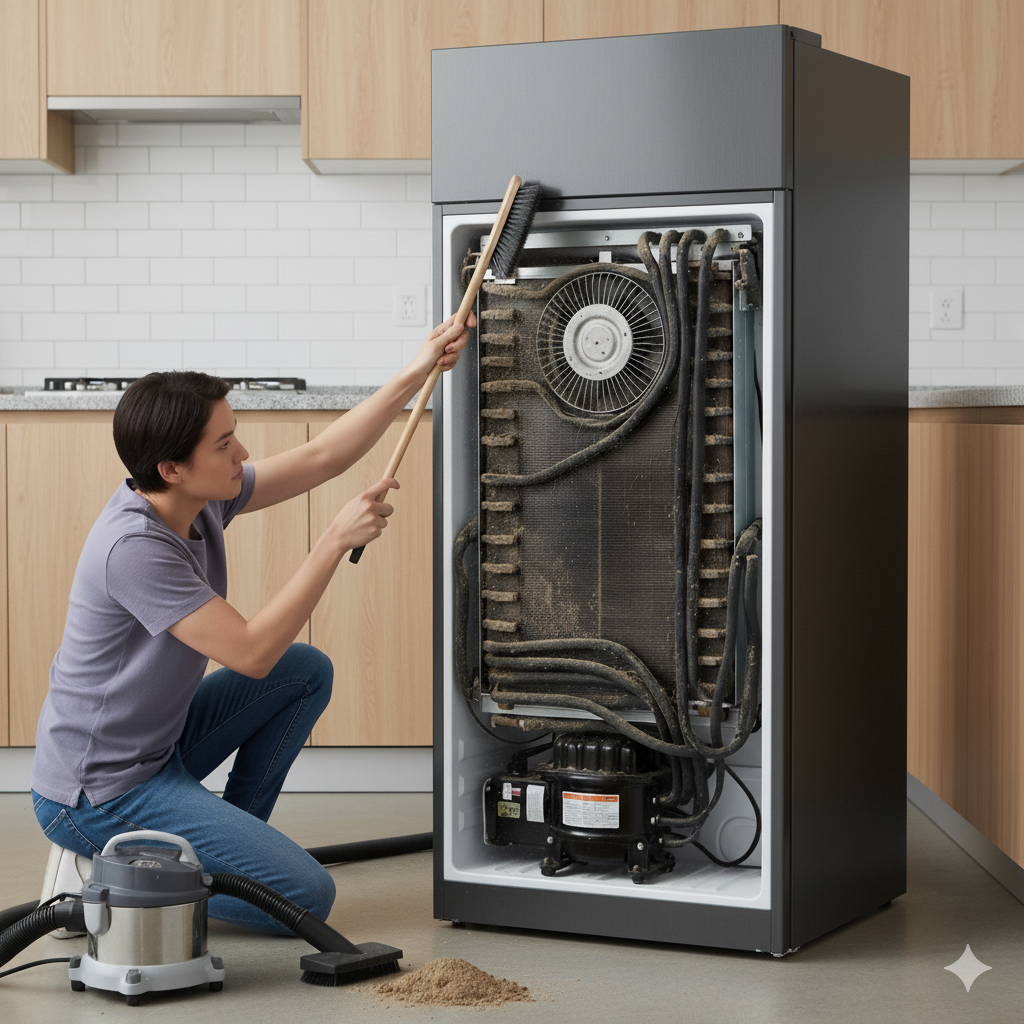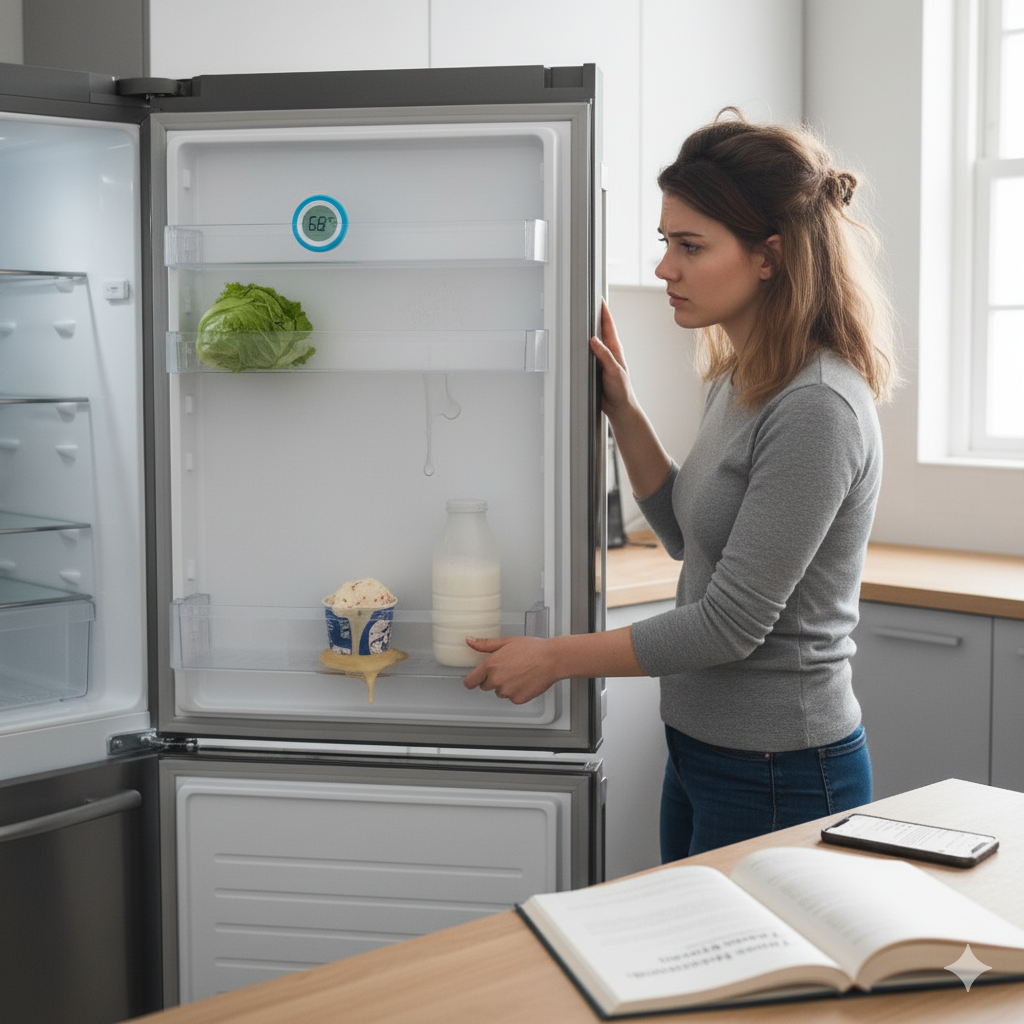How to Fix a Noisy Refrigerator: A Step-by-Step Guide
A refrigerator is the unsung hero of any kitchen, quietly keeping your groceries fresh and your drinks cold. But when it starts making strange noises—gurgling, buzzing, clicking, or grinding—it can feel like a cry for help. These sounds often signal that something’s amiss, but don’t panic! Many common refrigerator noises can be diagnosed and repaired, often without replacing the entire unit. In this comprehensive guide, we’ll walk you through the steps to identify the source of your refrigerator’s odd noises and how to fix them. We’ll also share when it’s time to call in professionals, like the expert team at North Vancouver Appliances, who specialize in bringing appliances back to life.
Understanding Why Your Refrigerator Makes Noises
Before diving into repairs, it’s helpful to understand that some refrigerator noises are normal. The hum of the compressor, the occasional click of the thermostat, or the soft drip of defrost water are all part of a refrigerator’s regular operation. However, unusual or persistent noises often indicate a problem with one of the following components:
- Compressor: The heart of the cooling system, which can buzz or rattle if it’s failing.
- Evaporator Fan: Responsible for circulating cold air, it may squeal or grind if obstructed or worn out.
- Condenser Fan: Keeps the condenser coils cool; debris or motor issues can cause rattling or humming.
- Defrost System: A malfunctioning defrost timer or heater can lead to clicking or sizzling sounds.
- Water Inlet Valve: Found in fridges with ice makers, it may hum or vibrate if faulty.
Let’s explore the most common noises, their causes, and how to address them step-by-step.
Related: How to Extend the Lifespan of Your Washing Machine
Step 1: Diagnose the Noise
The first step in repairing a noisy refrigerator is identifying the type and source of the sound. Here’s a breakdown of common noises and their likely culprits:
- Buzzing or Humming: Often caused by the compressor working harder than usual due to dirty condenser coils, a failing compressor, or a faulty water inlet valve.
- Clicking: Typically linked to the start relay (which powers the compressor) or a malfunctioning defrost timer.
- Grinding or Squealing: Usually indicates a problem with the evaporator or condenser fan motor, or debris caught in the blades.
- Gurgling or Bubbling: Often normal as refrigerant flows through the system, but persistent gurgling could point to a clogged drain tube.
- Rattling or Vibrating: Loose parts, such as condenser coils, drip pans, or items on top of the fridge, are common culprits.
To pinpoint the noise, listen carefully and note:
- When the noise occurs (e.g., when the compressor kicks on or during defrost cycles).
- Where it’s coming from (back, bottom, or inside the freezer compartment).
- How loud or frequent it is.
Step 2: Perform Basic Troubleshooting
Many refrigerator noises can be resolved with simple maintenance. Before diving into complex repairs, try these DIY fixes:
Clean the Condenser Coils
Dirty condenser coils force the compressor to work harder, leading to buzzing or humming noises. Coils are typically located at the back or beneath the fridge.
- Tools Needed: Vacuum cleaner with a brush attachment, coil cleaning brush.
- Steps:
- Unplug the refrigerator for safety.
- Locate the coils (remove the back panel or bottom grille if needed).
- Vacuum away dust and debris, then use a coil brush for stubborn dirt.
- Plug the fridge back in and listen for changes in noise.
Check for Loose Parts
Rattling or vibrating often comes from loose components or items stored on or near the fridge.
- Inspect the drip pan (under the fridge) and secure it if loose.
- Tighten any loose screws on the condenser coils or back panel.
- Remove items from the top of the fridge that might vibrate during operation.
Level the Refrigerator
An unlevel fridge can cause rattling or uneven compressor operation.
- Use a bubble level to check if the fridge is balanced.
- Adjust the front feet (using a wrench) to ensure the fridge tilts slightly backward.
Clear the Drain Tube
Gurgling noises may result from a clogged defrost drain tube, which can also cause water pooling inside the fridge.
- Locate the drain tube (usually at the back of the freezer compartment).
- Flush it with a mixture of warm water and baking soda using a turkey baster.
- Ensure water flows freely into the drip pan below.
If these steps don’t resolve the noise, it’s time to investigate specific components.
Related: Understanding and Troubleshooting Smart Appliance Connectivity Issues
Step 3: Inspect and Repair Key Components
For persistent or complex noises, you’ll need to troubleshoot internal components. Always unplug the refrigerator before working on electrical parts, and consult your fridge’s manual for model-specific guidance.
Compressor and Start Relay
A buzzing or clicking noise every few minutes often points to a failing compressor or start relay. The start relay is a small device attached to the compressor that helps it turn on.
- Tools Needed: Multimeter, screwdriver, replacement start relay (model-specific).
- Steps:
- Locate the compressor (at the back bottom of the fridge).
- Remove the start relay and overload protector.
- Test the relay with a multimeter for continuity. If it fails, replace it with a compatible part.
- If the relay is fine but the compressor is hot or silent, the compressor itself may be faulty—a costly repair best left to professionals.
Pro Tip: Compressor replacements are complex and expensive. For expert diagnosis and repair in the North Vancouver area, contact North Vancouver Appliances. Their skilled technicians can assess whether repair or replacement is the better option.
Evaporator Fan
Grinding or squealing from the freezer compartment often indicates a problem with the evaporator fan, which circulates cold air.
- Tools Needed: Screwdriver, replacement fan motor (model-specific).
- Steps:
- Access the evaporator fan (usually behind a panel in the freezer).
- Check for ice buildup or debris obstructing the blades. Clear any blockages.
- Spin the fan manually. If it’s stiff or noisy, the motor may need replacement.
- Test the motor with a multimeter and replace if defective.
Condenser Fan
Rattling or humming from the back or bottom of the fridge may stem from the condenser fan, which cools the condenser coils.
- Steps:
- Locate the fan (near the compressor, under or behind the fridge).
- Remove debris (like pet hair or dust) from the blades.
- Test the fan motor for continuity and replace if necessary.
Water Inlet Valve
If your fridge has an ice maker or water dispenser, a humming or vibrating noise could indicate a faulty water inlet valve.
- Steps:
- Locate the valve (usually at the back bottom, connected to the water line).
- Check for leaks or loose connections.
- Test the valve with a multimeter. Replace if it lacks continuity.
Step 4: Know When to Call a Professional
While many refrigerator noises can be fixed with DIY efforts, some issues require specialized tools, expertise, or refrigerant handling, which is regulated for safety and environmental reasons. Call a professional if:
- The compressor is faulty (requires refrigerant recharge or replacement).
- There’s a refrigerant leak (hissing noises or poor cooling).
- Electrical issues persist despite troubleshooting.
- The fridge is under warranty (DIY repairs may void it).
For residents of North Vancouver, North Vancouver Appliances offers reliable, same-day service for all major refrigerator brands. Their technicians are trained to handle complex repairs, from sealed system issues to electronic control board failures, ensuring your fridge runs smoothly again.
Step 5: Prevent Future Noises
Once your refrigerator is quiet again, take these preventive measures to keep it that way:
- Regular Cleaning: Vacuum condenser coils every 6 months to prevent dust buildup.
- Check Temperature Settings: Set the fridge to 37°F (3°C) and freezer to 0°F (-18°C) to reduce compressor strain.
- Avoid Overloading: Don’t cram shelves, as this restricts airflow and stresses the fan.
- Schedule Maintenance: Annual professional tune-ups can catch issues early. North Vancouver Appliances offers maintenance packages to extend your appliance’s life.
Common Questions About Noisy Refrigerators
Q: Is it safe to run a noisy refrigerator?
A: It depends on the noise. Minor rattling or gurgling is often harmless, but persistent buzzing, clicking, or grinding could indicate a serious issue that may worsen over time, leading to costly damage or food spoilage.
Q: How much does it cost to repair a noisy refrigerator?
A: Costs vary based on the issue. Simple fixes (like cleaning coils) are free if done yourself, while part replacements (e.g., a fan motor) may cost $100–$300, including labor. Compressor repairs can exceed $500. For accurate estimates, reach out to North Vancouver Appliances.
Q: Should I repair or replace my noisy fridge?
A: If your fridge is over 10 years old or repair costs approach 50% of a new unit’s price, replacement may be more economical. Newer models are more energy-efficient, saving you money long-term.
Conclusion
A refrigerator making strange noises doesn’t have to spell disaster. With careful diagnosis and basic maintenance, you can often silence the problem yourself. For more complex issues, don’t hesitate to enlist professional help to avoid further damage. In North Vancouver area, North Vancouver Appliances is your go-to for fast, reliable refrigerator repairs. Their experienced team can tackle everything from squeaky fans to failing compressors, ensuring your kitchen stays cool and quiet. Keep up with regular maintenance, and your fridge will hum happily for years to come!
Disclaimer: Always prioritize safety when working on appliances. Unplug the refrigerator and consult professionals for complex repairs to avoid injury or damage.











